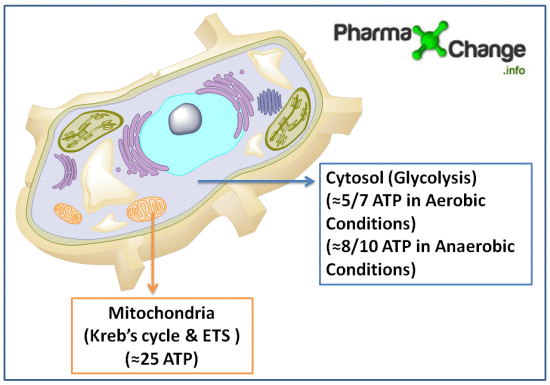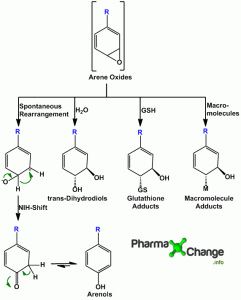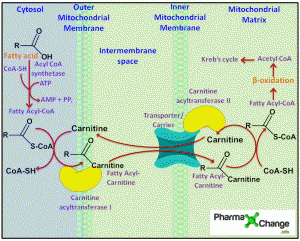Introduction
Cellular respiration can take place either in the presence or absence of oxygen leaving separate end products respectively. Metabolism of glucose leads to its breakdown to pyruvate. This pyruvate can have one of the following three fates:
- Breaks down to lactic acid in the presence of enzyme lactate dehydrogenase in vigorously contracting skeletal muscles, in certain micro-organisms etc. (called lactic acid fermentation)(Anaerobic Respiration)
- Breaks down to ethanol and carbon dioxide in some plant tissues, invertebrates and microorganisms (e.g. yeast) (called alcoholic fermentation) (Anaerobic Respiration)
- Enters aerobic respiration in Kreb’s Cycle to form carbon dioxide and water. (Aerobic Respiration)
These glucose molecules can be either stored as starch or glycogen in the body. When excessive energy is demanded by the body, this reserve is broken down to produce energy aerobically or anaerobically.
Aerobic respiration takes place in three steps:
- Glycolysis or Embden-Meyerhof pathway: All glycolysis reactions take place in the cytosol as all the enzymes required for the pathway are present here. In glycolysis one glucose molecule is converted to two pyruvate molecules with the release of energy in the form of ATP and NADH. This pathway is divided into two phases the preparatory phase and the pay-off phase. See : Glycolysis-Notes and Animation.
- Kreb’s Cycle or Citric Acid Cylce or Tricarboxylic Acid Cycle: The pyruvate formed in glycolysis then gets converted to acetyl CoA in the mitochondria. In the mitochondria enzymatic reactions occur known as Kreb’s Cycle to breakdown the acetyl CoA into CO2 and H2O with the release of energy in the form of ATP, NADH and FADH2. See : Kreb’s cycle with Animation
- Electron transport system: The reduced coenzymes (NADH and FADH2) formed in glycolysis and Kreb’s cycle are oxidized by giving up the protons and electrons to oxygen present in the mitochondria to synthesize ATP by oxidative phosphorylation.
Energetics of Metabolism of One Glucose Molecule

Glycolysis:
| Reaction | No. of NADH/FADH2 generated | No. of ATP generated/utilized |
| Under Aerobic conditions | ||
| Glucose → Glucose 6-phosphate | -1 | |
| Fructose 6-phosphate → Fructose 1,6-bisphosphate | -1 | |
| 2 (Glyceraldehyde 3-phosphate) → 2 (1,3-bisphosphoglycerate) | 2 NADH | +3/+5* |
| 2 (1,3-bisphosphoglycerate) → 2 (3-phosphoglycerate) | +2 | |
| 2 Phosphoenolpyruvate → 2 Pyruvate | +2 | |
| Total | ≈5/7* (aerobic conditions) | |
| Under Anaerobic conditions | ||
| 2 Pyruvate → 2 lactate | 2 NADH | +3/+5* |
| Total | ≈8/10* (anaerobic conditions) |
* Important Note: The NADH formed in the cytosol can yield variable amounts of ATP depending on the shuttle system utilized to transport them into the mitochondrial matrix. This NADH, formed in the cytosol, is impermeable to the mitochondrial inner-membrane where oxidative phosphorylation takes place. Thus to carry this NADH to the mitochondrial matrix there are special shuttle systems in the body. The most active shuttle is the malate-aspartate shuttle via which 2.5 molecules of ATP are generated for 1 NADH molecule. This shuttle is mainly used by the heart, liver and kidneys. The brain and skeletal muscles use the other shuttle known as glycerol 3-phosphate shuttle which synthesizes 1.5 molecules of ATP for 1 NADH.
Kreb’s cycle (also called citric acid cycle or tricarboxylic acid cycle):
| Reaction | No. of NADH/FADH2 generated | No. of ATP generated/utilized |
| 2 Pyruvate → 2 acetyl CoA | 2 NADH | +5 |
| 2 Isocitrate → 2 α- ketoglutarate | 2 NADH | +5 |
| 2 α- ketoglutarate → 2 succinyl CoA | 2 NADH | +5 |
| 2 succinyl CoA → 2 succinate | 2 ATP | +2 |
| 2 succinate → 2 fumarate | 2 FADH2 | +3 |
| 2 malate → 2 oxaloacetate | 2 NADH | +5 |
| Total | ≈25 |
Thus combining the ATP molecules generated from Glycolysis and Kreb’s cycle, ≈30-32 molecules of ATP are generated during metabolism of one molecule of glucose.
Note: The above calculations are done considering that one NADH molecules produces 2.5 ATP and one FADH2 molecule produces 1.5 ATP in the ETS cycle (See full reasoning above). This is because the Kreb’s cycle occurs within the mitochondria and therefore does not require any shuttle pathway for the transport of the NADH into the mitochondrial matrix. Hence there is optimal conversion of NADH to ATP.




It’s actually a great and helpful piece of information.
I’m happy that you just shared this helpful information with us.
Please keep us up to date like this. Thank you for sharing.